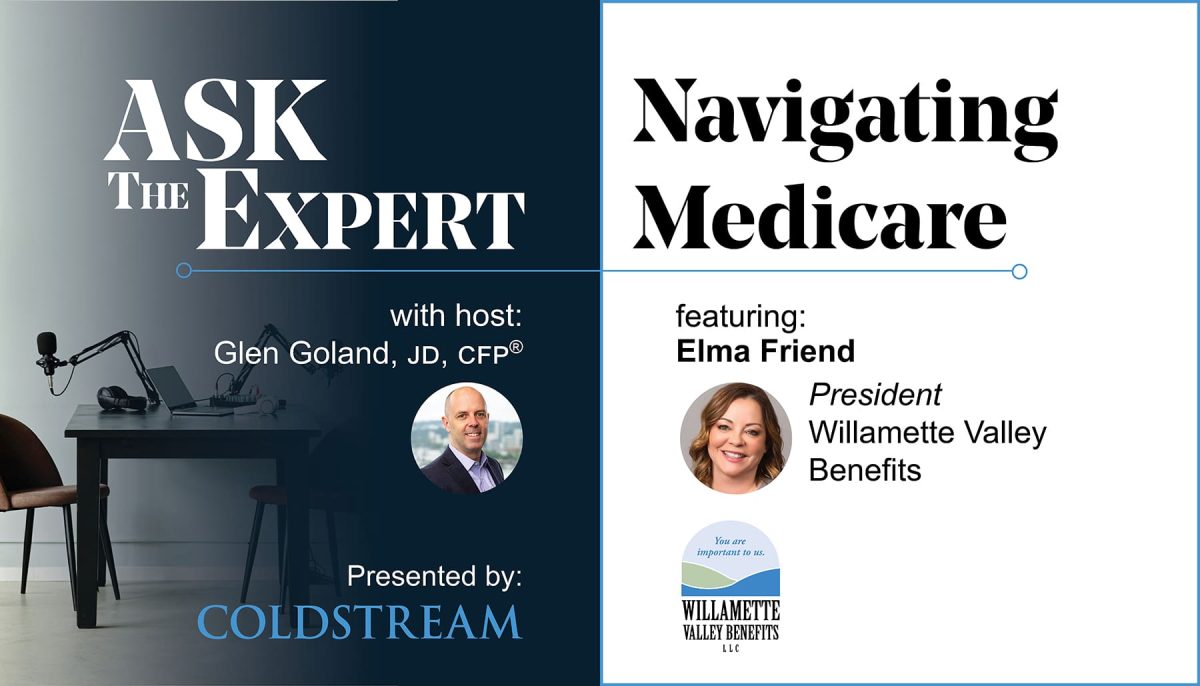
Insights
August 21, 2025
Navigating Medicare Open Enrollment: Your Guide to Making the Right Choices
In Retirement

It’s that time of year again. The leaves are changing, the weather is cooling, and Medicare Open Enrollment is right around the corner. For many, this season brings a mix of confusion and stress. So many plans, acronyms, and deadlines—it’s easy to feel overwhelmed. But it doesn’t have to be.
Think of this as your friendly, straightforward guide to making the most of Open Enrollment. It’s your chance to review your current coverage and make sure it still aligns with your health (and your budget) for the year ahead.
Understanding Medicare and Its Parts
Before diving into Open Enrollment options, it’s helpful to have a quick refresher on how Medicare is structured. Medicare is a federal health insurance program primarily for people age 65 and older, but it also covers certain younger people with disabilities. It’s made up of four different parts, each with specific coverage.
- Part A (Hospital Insurance): Think of this as your hospital coverage. It helps pay for inpatient hospital stays, skilled nursing facility care, hospice care, and some home health care. For most people, Part A is premium-free because they or their spouse paid Medicare taxes for at least ten years.
- Part B (Medical Insurance): This is your medical coverage. It helps pay for doctor’s visits, outpatient care, preventive services, and durable medical equipment like wheelchairs and walkers. Most people pay a monthly premium for Part B.
- Part C (Medicare Advantage): These are “all-in-one” plans offered by private insurance companies that are approved by Medicare. Medicare Advantage plans combine the coverage of Part A and Part B, and most also include prescription drug coverage (Part D) and extra benefits like vision, dental, and hearing.
- Part D (Prescription Drug Coverage): This part helps cover the cost of prescription drugs. You can get this coverage by either joining a standalone Part D plan or by enrolling in a Medicare Advantage plan that includes it.
What Exactly is Open Enrollment?
The Medicare Open Enrollment period, also known as the Annual Election Period (AEP), is your yearly opportunity to make changes to your Medicare coverage. It runs from October 15th to December 7th, and any changes you make will take effect on January 1st of the following year.
During this window, you can:
- Switch from Original Medicare to a Medicare Advantage Plan
- Switch from a Medicare Advantage Plan back to Original Medicare
- Change from one Medicare Advantage Plan to another
- Join, switch, or drop a Medicare Part D (prescription drug) plan
Why Should You Review Your Plan Every Year?
Even if you’re happy with your current plan, it’s crucial to check in and see if it’s still the best option for you. Here’s why:
- Your Plan Can Change: Insurance companies often update their plans each year. They might change premiums, deductibles, copays, or even their network of doctors and pharmacies. A plan that was perfect last year might not be this year.
- Your Health Needs Can Change: Have you started taking a new medication? Have you been diagnosed with a new condition that requires you to see a specialist? Your healthcare needs can evolve, and your plan should too.
- New Plans Might Be Available: Each year, new plans are introduced in your area, and they might offer better benefits or lower costs than what you have now.
Three Steps to Take Before Open Enrollment
To make the process as simple as possible, here’s a little homework you can do before October 15th rolls around.
1. Review Your “Annual Notice of Change” (ANOC)
By late September, your current Medicare plan will send you a document called the “Annual Notice of Change” (ANOC). Don’t toss this in the recycling bin! This document outlines all the changes your plan is making for the upcoming year, including:
- Changes to your premium and other costs
- Updates to your plan’s formulary (the list of covered drugs)
- Changes to the network of doctors, hospitals, and pharmacies
Read it carefully. If you see changes that you don’t like, or if your favorite doctor is no longer in-network, it’s a good sign that it’s time to start shopping around.
2. Make a List of Your Health Needs
Before you can find the right plan, you need to know what you’re looking for. Take a few minutes to jot down a list of your specific needs for the coming year.
- Your Prescriptions: List all the medications you take. Be sure to include the dosage and frequency. This is one of the most critical factors in choosing a Part D or Medicare Advantage plan. A plan’s formulary can make a huge difference to your out-of-pocket costs.
- Your Doctors and Specialists: Do you have a primary care physician you love? Are you seeing a specialist for a specific condition? Make a list of all your doctors and check to see if they’re in-network with the plans you’re considering.
- Other Needs: Are you hoping to get coverage for dental, vision, or hearing aids? Do you want a plan that offers gym memberships or other wellness programs? Knowing what’s important to you will help you narrow down your options.
3. Explore Your Options
Once you have your list, it’s time to compare plans. Don’t worry, you don’t have to do this alone!
- Use the Medicare Plan Finder: This is the official tool from gov and it’s a fantastic resource. You can enter your medications, doctors, and other information to see which plans in your area cover what you need and what your estimated annual costs will be. It’s a great way to get a side-by-side comparison.
- Talk to a SHIP Counselor: A State Health Insurance Assistance Program (SHIP) is a national program that provides free, unbiased counseling on all things Medicare. A SHIP counselor can help you understand your options and compare plans without any pressure to enroll in a specific one. You can find your local SHIP program by visiting org.
- Consult a Licensed Insurance Agent: You can also work with an independent, licensed insurance agent who can help you navigate the different plans and find one that fits your needs. They are trained to understand the complexities of Medicare and can be a valuable resource. We know several wonderful agents across different states and are happy to make introductions.
Don’t Wait Until the Last Minute
Open Enrollment ends on December 7th. Making changes after this date is difficult and often only possible under very specific circumstances. So, start your research early. Take the time to review your options and make a confident, informed decision. Your future self—healthier and maybe with a few more dollars in your pocket—will thank you!
*Certified Financial Planner Board of Standards Inc. owns the certification marks CFP® and Certified Financial Planner™ in the U.S.
Insights Tags
Related Articles

October 31, 2025
Maximizing Your Google Benefits: A Strategic Guide for 2026



September 22, 2025
The End of Paper Checks for Federal Payments: What Coldstream Clients Need to Know

September 9, 2025
Ask the Expert Videocast: Willamette Valley Benefits
